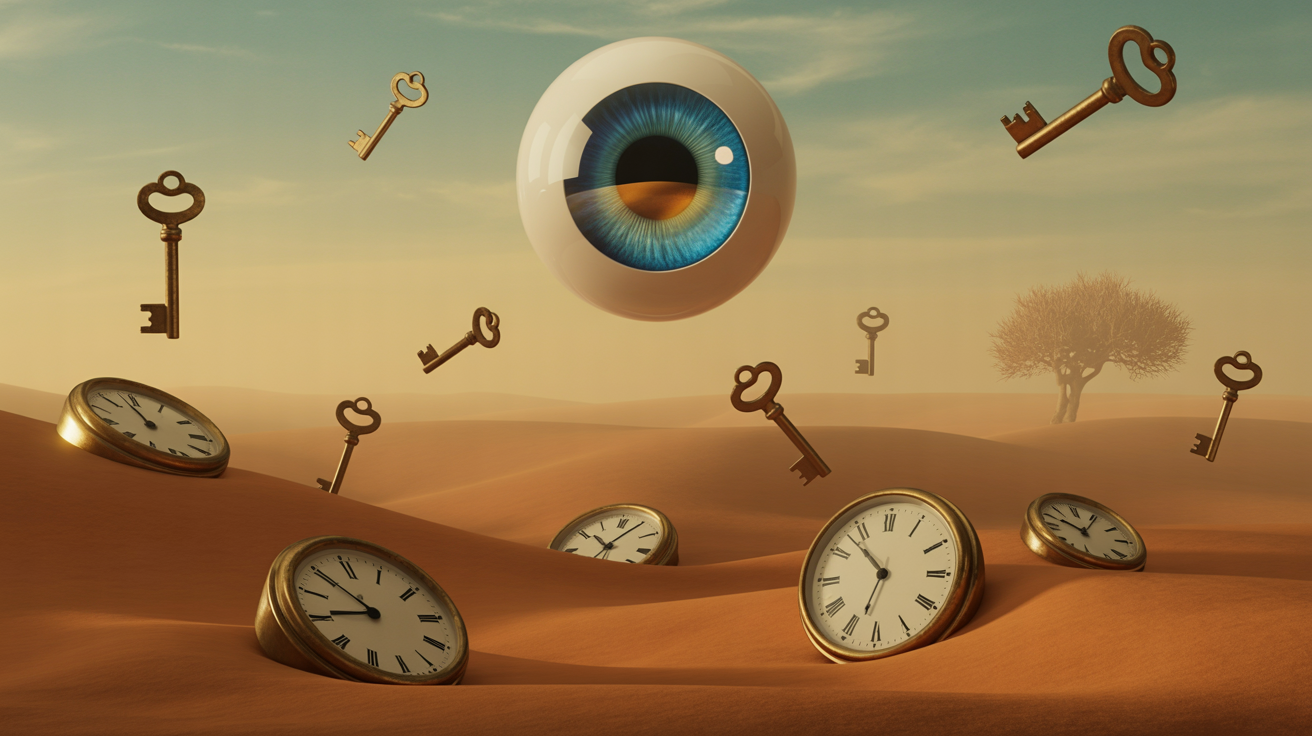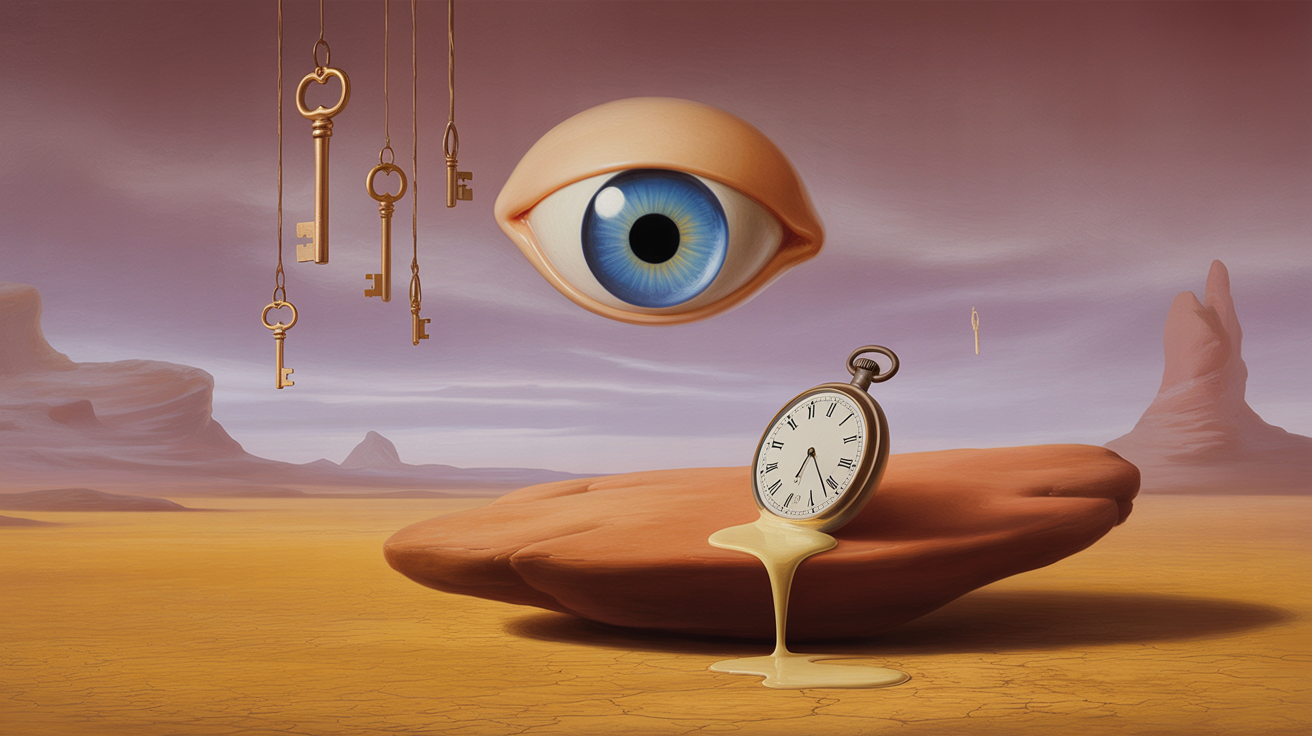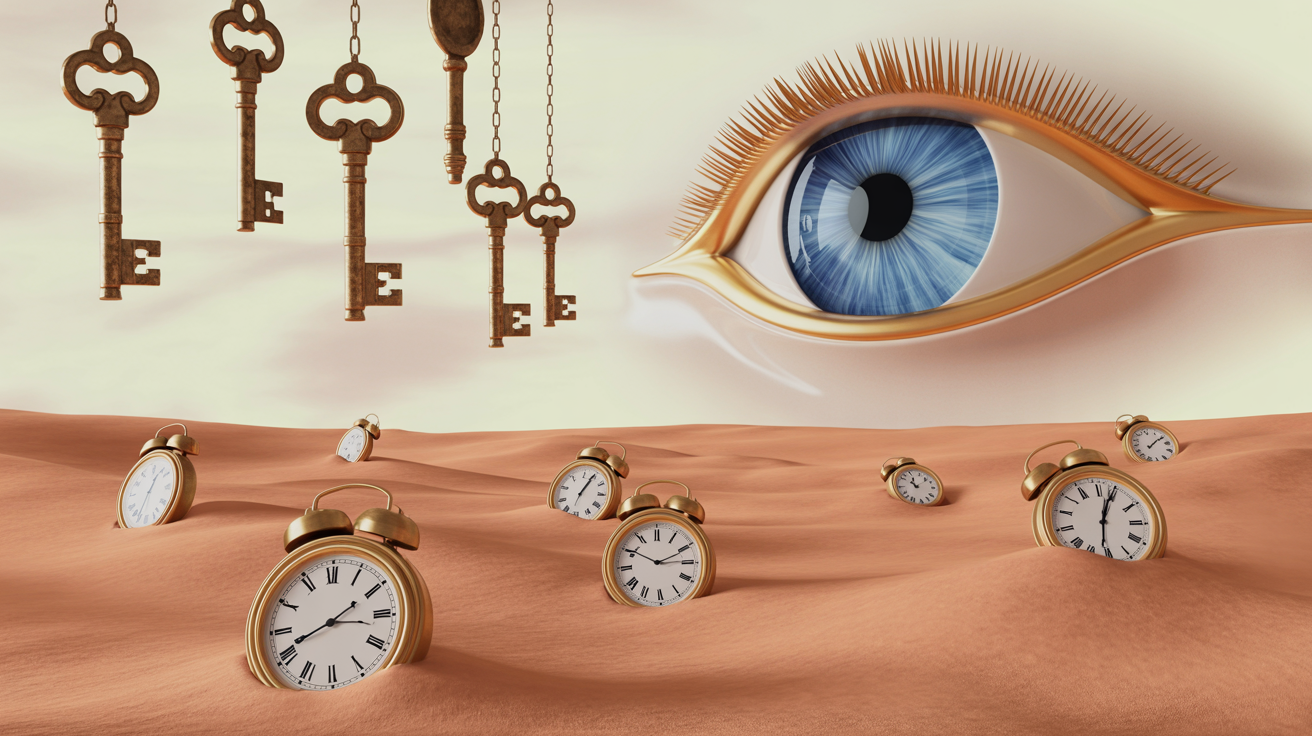1. Introduction to Surrealist Art
Elements of Surrealist Art: Have you ever encountered artwork that felt like stepping into a dream, or plunging into a nightmare? That’s surrealist art. It’s strange, beautiful, confusing, and deeply thought-provoking. But what makes a painting surreal? Let’s dive in.
2. The Birth of Surrealism
Surrealism began in the 1920s as a cultural movement influenced by Dadaism and the psychoanalytic theories of Sigmund Freud. Founded by André Breton, surrealism aimed to free the mind from logic and embrace the power of the unconscious.
3. What Makes Art Surreal?

The goal of surrealist art is to bridge reality and fantasy. Artists use unusual visuals, unexpected combinations, and dreamlike scenes to explore emotions, identity, and hidden truths. The magic lies in the elements they use.
4. Key Element #1: Dream Imagery
Surrealist artists often depict dream-like scenes where logic is suspended. Melting clocks, floating figures, and impossible landscapes pull viewers into a space beyond reality.
🖼️ Example: Salvador Dalí’s “The Persistence of Memory.”
5. Key Element #2: Juxtaposition

This means placing unrelated things side-by-side. A fish flying through the sky or a lion with butterfly wings—these absurd pairings shock and fascinate.
Why it matters: It challenges our brain to find new meanings.
6. Key Element #3: Automatism
Automatism is the practice of letting the hand move freely without conscious thought. Artists such as Joan Miró harnessed this technique to access their subconscious minds, creating surprising and imaginative forms.
Think of it as drawing with your eyes closed—on purpose.
7. Key Element #4: Symbolism
Symbols are everywhere in surrealist art. Keys, eggs, eyes, clocks—each carries layered meanings. These symbols come from personal memories, mythology, and psychology.
🔍 Tip: Don’t just look. Ask: “What could this mean?”
8. Key Element #5: Illogical Scenes

Surrealist art often shows bizarre or impossible settings, like walking upside down or swimming in the sky. The laws of physics don’t apply here.
This invites the viewer to question what’s “normal.”
9. Key Element #6: Metamorphosis
Things in surrealist paintings often change shape: people turn into trees, clouds become animals. This shape-shifting creates visual poetry.
It represents transformation—both literal and emotional.
10. Key Element #7: Distorted Figures
In surrealist artworks, human figures frequently appear contorted, elongated, or distorted, evoking a sense of unease. This distortion reflects inner feelings, trauma, or a surreal identity.
Exactly—surrealism emphasizes mood and emotional resonance, focusing more on sensations and subconscious impressions than on realistic appearances.
11. Use of Negative Space and Scale
Tiny people, giant animals, endless deserts—surrealists play with scale to emphasize emotion. Negative space (empty backgrounds) makes the subjects more intense.
It’s like using silence in music—it draws your attention.
12. Time Manipulation in Surrealism
Time doesn’t tick normally in surrealist art. You’ll see melting clocks, floating watches, or scenes from different periods coexisting.
Why? This aims to illustrate that time is shaped by our perceptions and feelings, rather than solely by objective measurement.
13. Nature and the Unnatural
Surrealists loved combining real natural elements with imagined ones—like a tree growing out of a book or a bird with a human face.
Absolutely! Nature often serves as a mirror for the subconscious, reflecting inner thoughts, feelings, and dreams symbolically and poetically.
14. Famous Surrealist Artists
Some iconic names include:
-
Salvador Dalí – The master of dreamlike distortion
-
René Magritte – Known for playful contradictions
-
Joan Miró – Focused on automatism and abstract forms
-
Max Ernst – Merged mythology and mystery
15. Legacy of Surrealist Art
Surrealism didn’t end—it evolved. Its influence can be seen in modern art, fashion, film (think “Inception” or “Pan’s Labyrinth”), and even advertising.
Its legacy: Helping us see the world through the lens of imagination.
16. Conclusion: Why These Elements Matter
Elements of Surrealist Art: Exactly—surrealist elements are deliberate, aiming to probe the subconscious, challenge perceptions, and reveal deeper truths beneath surface appearances. They help express complex thoughts, emotions, and human experiences that words can’t always capture.
Whether you’re an artist or a curious viewer, understanding these tools opens up a deeper appreciation for one of the most powerful movements in art history.
❓ FAQs About Elements of Surrealist Art
1. What are the main elements of surrealist art?
Dream imagery, juxtaposition, automatism, symbolism, illogical scenes, metamorphosis, and distortion are core elements.
2. Why do surrealist artists use dream-like scenes?
To explore the subconscious and express thoughts and emotions that are not limited by logic or reality.
3. What is the role of symbolism in surrealist art?
Symbolism adds layers of meaning, often drawn from mythology, psychology, or personal memory.
4. How is surrealist art different from abstract art?
Surrealism often includes recognizable objects in unreal contexts, while abstract art removes direct representation entirely.
5. Can modern artists still use surrealist techniques?
Absolutely. Many contemporary artists blend surrealist elements with digital tools, photography, and video.

